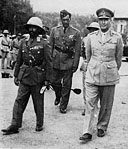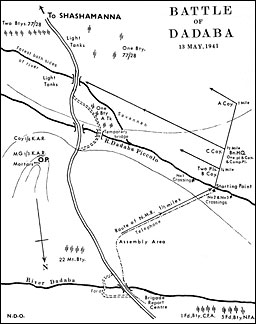
20
The Battle of the Lakes--Dadaba
Though the fall of Addis Ababa, Asmara and Massawa and the removal of the Italian threat to the Middle East's supply route through the Red Sea meant the attainment of the major strategical objective of the East African Campaign, any enemy forces remaining in the field in Abyssinia still represented a threat to the lines of communication or even the possibility of renewed offensive action in conjunction with Axis operations in North Africa. To the south, in the Galla-Sidamo, the enemy forces--estimated by East Africa Force at about 40,000 infantry and militia with some 200 guns--were in three groups spread over a vast area some 400 x 300 miles in extent.1 Still wedded to the policy of tying down the maximum number of British troops, there were seven Colonial Divisions (with establishments comparable only to British brigades) under Lieutenant-General Pietro Gazzera's Southern Command, with Headquarters at Jimma.
With the arrival of the remnants retreating from Harar, the enemy forces in the Galla-Sidamo were regrouped into three zones, the first (with about 15,000 men) in the region bounded by the Sudanese frontier, the Blue Nile, the Upper Omo River and the Baro River. This 'Didessa Group' as it was called fell under General de Simone's command and its units, deployed along the Upper Omo, faced east to cover the flank against General Wether all's forces advancing from Addis Ababa. Headquarters were at Gimbi.
The second group, under General Tissi, with Headquarters at Soddu, was the Omo Left-bank Group, with divisions north of Yavello and Neghelli and around the northern lakes, Zwai, Langana, Abyata (Algato) and Shala above Shashamanna. In all, the Italians reckoned, General Tissi could muster some 10,000 poorly equipped men.
In a central zone between these two groups, General Gazzera kept under his own command 22nd Colonial Division in the Maji-Bonga area south-west of Jimma, and other troops on a new front--the North-East Front on either side of Abalti--commanded by General Ettore Scala.2
General Cunningham's nearest available troops to deal with these widely separated forces were those elements of 11th African Division at Adama and 12th African Division troops attacking northwards from Yavello, where the aerodrome had been occupied without opposition on 16 March by two companies of 1/4 King's African Rifles, lifted by





